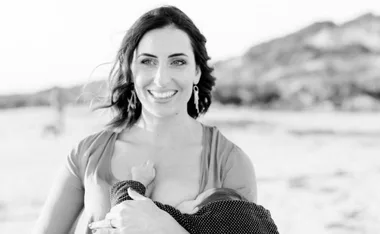By Annette Campbell
Try this exercise for a few minutes …
Close your eyes or put something on as a blindfold. Cover your ears with headphones or use earplugs so you can only hear muffled sounds at best. Now imagine what challenges would present themselves if you tried to go about your daily routine.
This is the world of people who are both deaf and blind — ‘deafblind’ is the term.
Every minute of every day, significant obstacles must be overcome by people who are deafblind. And there to support them are the dedicated group who run the Deafblind Association (DBA) — such as Melbourne-based case manager Ainslie Watson.
“I supervise the community support workers in their hands-on roles supporting the deafblind community in their day-to-day lives,” she explains. “We help with things like doing the groceries, banking, going to the post office or a swimming class or the gym.
“But we’re actually supporting them to be independent themselves, rather than doing things for them.”
Ainslie, 27, has worked for the DBA for nearly three years now and says, “It’s a real pleasure to be involved with this community.”
Ainslie explains that although the term deafblind means being both deaf and blind, “A person’s not always completely deaf and totally blind. It can be in degrees and various combinations.”
She says that the biggest challenge for this community is communication. “They’re living life through touch,” explains Ainslie. “Another challenge is the isolation and related depression. It’s a very small community and because of communication and mobility issues, they’re not able to get out as much.
“Using public transport can be difficult. For example, someone might hear well enough to know there’s a bus coming, but might not be able to see the number.”
Ainslie says the best thing we can do to help is be patient (and support with donations!)
“These days we’re all rushing about so fast, but just try to remember that if you see someone with a cane and think they’re blind, but they don’t answer you, don’t automatically think they’re being rude … they could be deaf as well.
“And if you see someone using sign language and think they’re deaf, but they’re also taking their time to move through the checkout, for example, they could be blind as well.”
Deafblind Awareness Week was launched on Sunday June 26.
“We just want people to be aware that deafblindness exists,” says Ainslie. “And to ask that people try to understand what it’s like to live without varying degrees of hearing and sight.”
Contact the Deafblind Association for more information.
Ph: (03) 9882 7055 or visit their website: www.dba.asn.au
Picture posed by model
Related Stories










